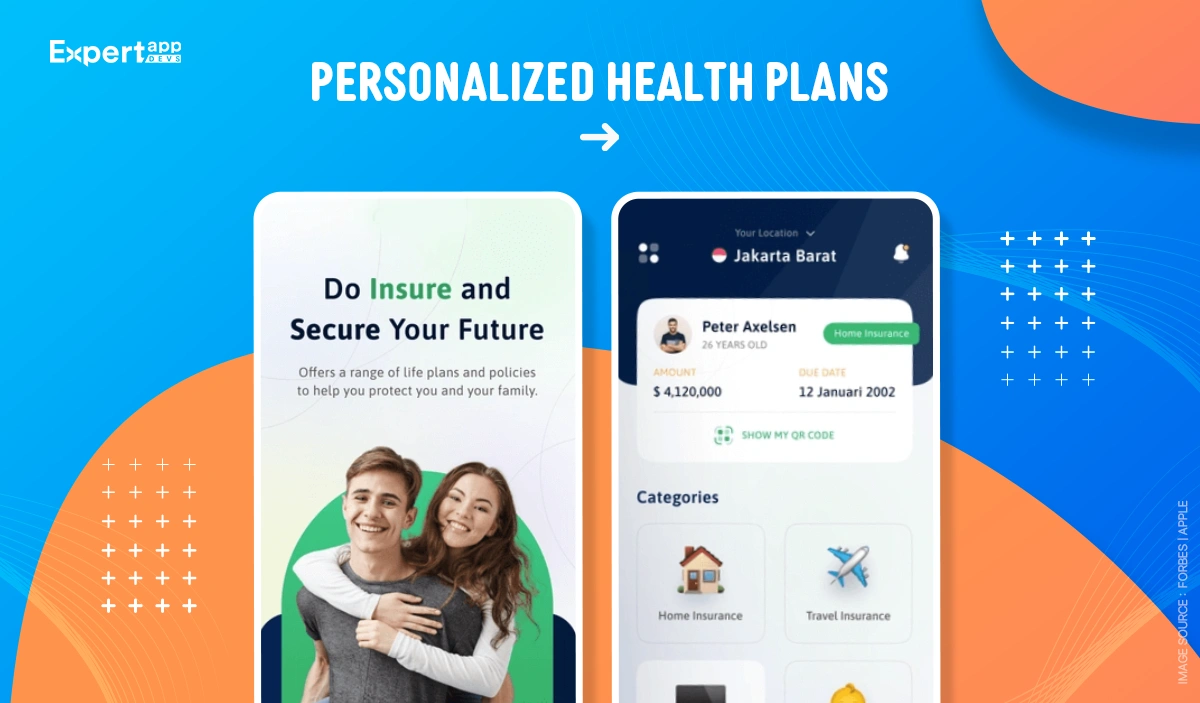How to Build a Personalized Digital Health Plan: A Comprehensive Guide

Embark on a journey to discover the intricacies of crafting a personalized digital health plan that caters to individual needs and goals. This guide delves into the realm of digital health management, offering insights and strategies for a healthier lifestyle.
Explore the steps, tools, and technologies involved in creating a customized health plan that enhances well-being and promotes a proactive approach to health.
Understanding Personalized Digital Health Plans

A personalized digital health plan is a tailored approach to managing one's health using digital tools and technologies. It involves creating a plan that considers an individual's specific health needs, goals, and preferences.
Having a customized health plan is important because it allows individuals to address their unique health concerns in a way that is personalized to them. This can lead to better health outcomes, improved adherence to treatment plans, and a more proactive approach to managing one's health.
Benefits of Using Digital Tools for Health Management
- Increased accessibility to health information and resources.
- Ability to track and monitor health metrics in real-time.
- Personalized recommendations based on individual health data.
- Convenience in scheduling appointments and communicating with healthcare providers.
- Engagement and motivation through interactive tools and features.
Creating a Personalized Digital Health Plan
Creating a personalized digital health plan involves several key steps to tailor the plan to individual health goals and needs. By utilizing digital health tools, individuals can track their progress, receive personalized recommendations, and stay motivated on their health journey.
Steps in Building a Personalized Digital Health Plan
- Assess Current Health Status: Begin by evaluating your current health status, including physical activity levels, diet, sleep patterns, and stress levels.
- Set Health Goals: Identify specific health goals you want to achieve, whether it's losing weight, reducing stress, improving sleep, or managing a chronic condition.
- Choose Digital Health Tools: Select digital health tools that align with your health goals, such as fitness trackers, nutrition apps, meditation apps, or symptom trackers.
- Track Progress: Use the chosen digital health tools to track your progress towards your health goals, monitor changes, and adjust your plan accordingly.
- Receive Personalized Recommendations: Many digital health tools offer personalized recommendations based on your health data, providing insights and guidance to help you reach your goals.
- Stay Consistent: Consistency is key in maintaining a personalized digital health plan. Make adjustments as needed and stay motivated to achieve long-term success.
Examples of Digital Health Tools
- Fitness Trackers: Devices like Fitbit or Apple Watch track physical activity, heart rate, and sleep patterns to help individuals stay active and monitor their progress.
- Nutrition Apps: Apps like MyFitnessPal or Lose It! help users track their daily food intake, set nutrition goals, and receive personalized meal recommendations.
- Meditation Apps: Platforms like Headspace or Calm provide guided meditation sessions, breathing exercises, and stress-relief techniques to support mental well-being.
Tailoring the Plan to Individual Health Goals and Needs
- Customize Goals: Adjust your health goals based on your unique needs and preferences, whether it's focusing on weight management, improving sleep quality, or reducing stress levels.
- Adapt Tools: Explore different digital health tools to find the ones that best align with your health goals and lifestyle, ensuring they provide meaningful insights and support.
- Seek Professional Guidance: Consult healthcare professionals or wellness coaches to help tailor your digital health plan, receive expert advice, and ensure it meets your individual needs.
Utilizing Technology for Health Monitoring
Technology plays a crucial role in modern healthcare, allowing individuals to monitor their health more effectively and efficiently. By incorporating wearable devices and health tracking apps into a personalized digital health plan, individuals can track their progress, manage their health data, and make informed decisions to improve their overall well-being.
Incorporating Wearable Devices
- Wearable devices such as fitness trackers, smartwatches, and health monitors can track various health metrics like heart rate, sleep patterns, exercise levels, and calories burned.
- These devices provide real-time data that can be synced to health tracking apps, allowing individuals to monitor their health habits and make adjustments as needed.
- By wearing these devices throughout the day, users can gain valuable insights into their daily activities and make more informed choices to support their health goals.
Role of Health Tracking Apps
- Health tracking apps serve as a centralized hub for storing and analyzing health data collected from wearable devices, allowing users to visualize their progress over time.
- These apps can provide personalized recommendations, reminders, and insights based on the user's health goals and data, helping individuals stay on track with their wellness journey.
- Users can also share their health data with healthcare providers for more informed discussions during medical appointments, leading to better healthcare outcomes.
Tips for Integrating Technology for Better Health Outcomes
- Set achievable health goals and use technology to track progress towards these goals, celebrating small victories along the way.
- Utilize features like goal setting, reminders, and data visualization in health tracking apps to stay motivated and engaged in your health journey.
- Stay informed about the latest advancements in health technology and consider incorporating new devices or apps that align with your wellness objectives.
Incorporating Health Data Analysis

Health data analysis plays a crucial role in building an effective personalized digital health plan. By analyzing data related to an individual's health, it becomes possible to gain valuable insights that can guide the creation of a tailored plan to address specific health needs and goals.
Significance of Data Analysis in Health Planning
Health data analysis helps in understanding patterns, trends, and correlations in health information, allowing for a comprehensive assessment of an individual's well-being. By examining data such as medical history, lifestyle habits, and biometric measurements, healthcare providers can identify areas of improvement and develop strategies to optimize health outcomes.
- Identifying Risk Factors: Data analysis can reveal potential risk factors for various health conditions, enabling proactive measures to prevent or manage these risks effectively.
- Monitoring Progress: By tracking health data over time, individuals and healthcare professionals can monitor progress towards health goals and make necessary adjustments to the plan.
- Personalizing Interventions: Analyzing data helps in tailoring interventions and recommendations based on individual needs, preferences, and responses to treatment.
Tools for Health Data Analysis
There are various tools and software available that can aid in health data analysis, providing valuable insights for personalized health planning:
One example is wearable devices like fitness trackers and smartwatches, which collect data on physical activity, heart rate, sleep patterns, and more. These devices can sync with apps or platforms that analyze the data to offer personalized recommendations for improving health and fitness.
- Health Tracking Apps: Apps that allow users to input and track their health data, such as diet, exercise, and symptoms, can help in identifying patterns and trends that influence overall health.
- Electronic Health Records (EHR) Systems: Healthcare providers use EHR systems to store and analyze patient data, facilitating better coordination of care and informed decision-making.
- Data Analytics Platforms: Advanced analytics platforms can process large volumes of health data to generate insights for population health management and individualized care.
Setting Realistic Health Goals
Setting realistic health goals is essential when creating a personalized digital health plan. By establishing achievable objectives, individuals can effectively track progress and stay motivated throughout their health journey.
Importance of Setting Milestones and Tracking Progress
Setting milestones within a digital health plan allows individuals to break down their goals into smaller, manageable tasks. By tracking progress regularly, individuals can celebrate small wins and stay motivated to continue working towards their ultimate health objectives.
- Establish short-term and long-term goals to keep track of progress effectively.
- Use health monitoring devices to measure and record data that reflects progress towards set milestones.
- Celebrate achievements along the way to maintain motivation and momentum.
Strategies for Staying Motivated and Committed
Staying motivated and committed to a health plan can be challenging, but there are strategies that individuals can implement to help them stay on track.
- Find an accountability partner or join a support group to stay motivated and accountable.
- Reward yourself for reaching milestones to reinforce positive behaviors and progress.
- Regularly reassess and adjust goals based on progress and changing circumstances to ensure continued motivation.
Final Thoughts

As we conclude this exploration of personalized digital health plans, remember that the key to optimal health lies in personalized care and proactive management. By harnessing the power of digital tools and technologies, you can embark on a journey towards a healthier and more fulfilling life.
FAQs
How can I customize my digital health plan to suit my individual needs?
To tailor your digital health plan, consider setting specific health goals, utilizing relevant digital tools, and tracking your progress regularly.
Are there any recommended wearable devices for incorporating into a digital health plan?
Popular wearable devices like fitness trackers, smartwatches, and heart rate monitors can be seamlessly integrated into your digital health plan for real-time health monitoring.
Why is it important to set realistic health goals within a digital health plan?
Setting achievable health goals helps in maintaining motivation, tracking progress effectively, and ensuring sustainable lifestyle changes for long-term well-being.




